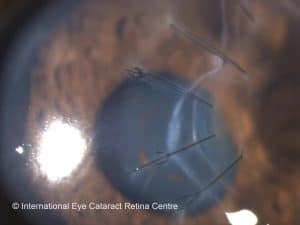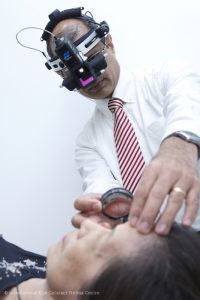
Dr Ajeet Madhav Wagle
MBBS(India) FRCS(Edinburgh) FAMS(Ophthalmology)(Singapore)
By Dr Ajeet Madhav Wagle, Medical Director and Senior Consultant Ophthalmologist, International Eye Cataract Retina Centre at Mount Elizabeth Medical Centre and Farrer Park Medical Centre, Singapore
Sports-related eye injuries occur commonly, especially among children and amateurs. Severe sports-related eye injuries can result in permanent vision loss.
To raise awareness of sports-related eye injuries, the American Academy of Ophthalmology has nominated April as Sports Eye Safety Month to remind everyone that the vast majority of these injuries are potentially avoidable by simply wearing proper eye protection while engaging in sports.
The risk of sustaining eye injury varies depending on the type of sport and the nature of activity involved. Certain sports come with higher risks of eye injuries. In general, contact sports (e.g., boxing and martial arts), racquet sports (e.g., badminton, squash and tennis), baseball, basketball, hockey and football are frequent causes of eye injuries. In fact, boxing and full-contact martial arts pose an extremely high risk of serious or even blinding eye injuries.

Traumatic corneal abrasion and subconjunctival haemorrhage from a badminton shuttlecock injury
Although sports account for a high number of eye injuries, it is also not uncommon to sustain eye injuries at home during routine repair, cleaning and cooking activities. In these situations, it is best to err on the side of caution and to use common sense by choosing appropriate eye protection during domestic do-it-yourself (D.I.Y.) activities such as hammering, nailing and use of power tools to reduce the risk of serious eye injuries.
Appropriate protective eyewear can prevent as many as 90% of sports-related eye injuries. Polycarbonate lenses may be worn for sports such as racquet sports, baseball and hockey.
If you have reduced vision in one eye, you should be even more careful to avoid sports-related injury by using polycarbonate lenses to protect the better eye while participating in sports. In this instance, it is best to also check with your ophthalmologist whether or not participating in the particular contact or racquet sport is advisable for you.
One must make sure that the level of eye protection used is appropriate for the particular type of sporting activity. It is also important to remember that regular prescription glasses do not offer proper eye protection against sports-related eye injuries.

Protective eyewear should meet approved standards of quality. The eye wear should also have an appropriate fit to provide adequate protection to the eyes. Some sports (e.g. baseball, cricket, hockey and fencing) may require the use of a helmet with shatter-proof polycarbonate face mask or wire shield to prevent eye injuries.
In addition, it is recommended that everyone engaged in sports should have a baseline comprehensive eye examination done to detect any pre-existing eye conditions. This can help individualise the risk of injury and customise the advice for appropriate protective eye wear.
If an eye injury unfortunately does occur, you must see your ophthalmologist or go to an emergency department immediately, even if the injury appears to be a minor one. Delaying medical attention can result in permanent vision loss or blindness.

It is recommended that everyone who engage in sports should have a baseline comprehensive eye examination performed to detect any pre-existing eye conditions.
